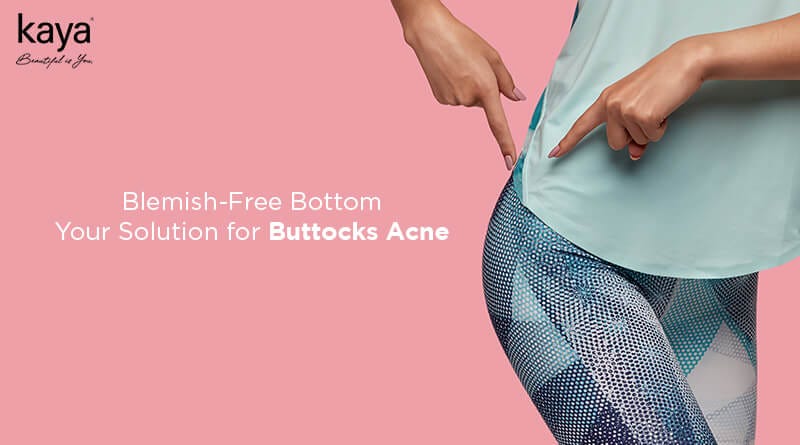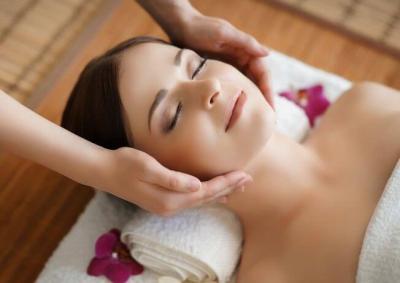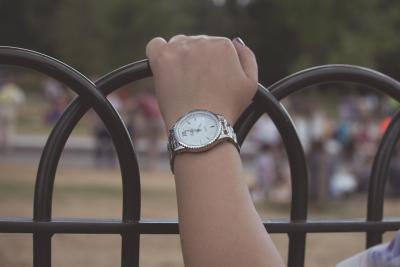How Much Does Laser Scar Removal Cost In India?
Table of Contents
- Understanding Scars and Why Removing Them Matters
- How Do Scar Removal Treatments Work?
- Laser Scar Removal Techniques and Processes
- Estimated Costs of Laser Scar Removal in India
- What Affects Laser Treatment Pricing?
- Overview of Alternative Scar Treatments and Price Ranges
- How To Choose The Right Scar Removal Treatment?
Introduction
Scars can form due to acne, surgery, stitches, burns, chickenpox or trauma to the skin. Based on the extent of underlying skin damage, scars may appear depressed, uneven, bumpy, stretched or discolored on the surface. Scarring is part of the natural healing process but deeper wounds can lead to prominent, unsightly scarring.
Location is also a factor in whether scars bother individuals or not. Scars on visible facial skin tend to have more of an emotional impact compared to scars on the body which can be concealed with clothing. The face is central to a person’s identity. Facial scarring whether from acne or accidents can negatively affect self-esteem.
With advancements in cosmetic procedures, scar removal or revision has become easier with lasers and other minimally invasive techniques. These allow improving the appearance and texture of old, unsatisfactory scars on the face or body.
However, scar removal involves certain costs depending on the technology, number of sessions, doctor’s fees and other elements. Having an understanding of the approximate pricing can help individuals decide if undergoing scar treatment is worth the investment.
This guide covers all aspects of scar removal costs in India. Let's first understand why scars form and how removing them can benefit individuals psychologically and physically.
Cost Of Laser Scar Removal Treatment in India
| Treatment | Price | Offers |
|---|---|---|
| Laser Scar Revision | Get Price | Get Latest Offers |
| Dermabrasion | Get Price | Get Latest Offers |
| Chemical Peels | Get Price | Get Latest Offers |
| Microneedling | Get Price | Get Latest Offers |
| Scar Excision Surgery | Get Price | Get Latest Offers |
| Dermal Fillers | Get Price | Get Latest Offers |
1. Understanding Laser Scars and Why Removing Them Matters
Scars signify a previous skin injury that disrupted the deeper dermal layers where collagen fibers provide structural support. Here are some ways scars impact individuals:
Types of Scarring
- Atrophic scars: Depressed scars caused by loss of tissue. They appear as sunken or indented pits on the skin surface. Common after severe acne.
- Hypertrophic scars: Raised, thickened scars with excess collagen deposition. Can be itchy and painful. Seen after burns and injuries.
- Keloid scars: Enlarged scars growing beyond the original wound edges. They may keep increasing in size and do not regress on their own.
- Contracture scars: Tight, rigid bands of scar tissue that limit normal skin movement and function. Result from severe burns.
Emotional Impact
- Scars act as reminders of previous trauma or ordeal, preventing closure.
- Facial scars can cause social anxiety and negatively affect self-image.
- Scars from self-harm may evoke disturbing memories and experiences.
- Revising scars can improve self-confidence and happiness.
Physical Discomfort
- Hypertrophic and keloid scars may be itchy, painful and tender to touch.
- Tight contracture scars can reduce mobility of joints and limbs.
- Scars on delicate eyelids or lip area can cause functional issues.
- Smoothening scars through removal provides physical comfort.
Benefits of Scar Reduction
- CAMOFLAGE: Minimizing obvious scarring helps conceal marks of past injury or trauma.
- TEXTURE: Scars get a smoother, flatter, more uniform texture that blends with surrounding skin.
- ELASTICITY: Treating rigid bands can improve elasticity and movement around scar tissue.
- SENSATION: Gentle resurfacing enhances sensation in numb, de-sensitized scar areas.
- PIGMENT: Better vascularity and skin regeneration helps normalize pigmentation of scars.
- RELIEF: Revising painful or itchy scars provides physical relief and comfort.
- CLOSURE: Removing visible reminders of past trauma can provide emotional closure.
- CONFIDENCE: Reduced scarring especially on face or exposed areas boosts self-esteem.
Considering the wide-ranging benefits both mental and physical, scar removal is certainly worth exploring for those troubled by unsightly scars, especially on visible parts of the face and body. But what treatment options are available and how much do they cost? Let's look at that next.
2. How Do Scar Removal Treatments Work?
There are a variety of minimally invasive techniques performed on an outpatient basis that can improve scar appearance. Here is an overview of how popular scar removal options work:
Dermabrasion
- Involves abrading the top layers of scarred skin using a rapidly rotating device with a rough wire brush or diamond fraise.
- The abrasion causes controlled injury to the skin to trigger new collagen formation and skin regeneration.
- Typically performed under local anesthesia for patient comfort.
- Three to five sessions spaced 2-4 weeks apart are needed for gradual scar smoothing.
- Used for raised, thickened scars and uneven texture.
Chemical Peels
- Apply a chemical solution like trichloroacetic acid, glycolic acid etc onto the scar.
- The peeling agent causes controlled damage to the epidermis allowing new skin with improved tone and texture to emerge.
- Depth of the peel depends on scar severity and desired results.
- Repeated light peels or a few deeper peels may be performed.
- Improves pigmentary changes, fine wrinkles and acne scars.
Microneedling
- Uses very fine, tiny needles in a roller or pen device that puncture the skin triggering wound healing.
- Microneedle pens with adjustable needle length allow controlled penetration into the dermis to stimulate collagen.
- Performed once every 3-4 weeks for around 5-8 sittings.
- Effective for depressed acne scars and skin rejuvenation.
- Downtime is minimal with only 1-2 days of redness.
Scar Surgery
- Involves cutting out and removing contracted bands of scar tissue.
- The excision helps release tight skin and improve function.
- Often combined with laser resurfacing on surrounding scar tissue.
- Requires proper wound care post-surgery.
- Used for severe burn contractures causing disability.
Dermal Fillers
- Hyaluronic acid fillers are injected directly into depressed scars like icepick marks or boxcar scars.
- The filler plumps up the scar from below and raises the skin surface to the level of normal skin.
- Provides temporary improvement lasting around 6-12 months.
- Needs repeat injections to maintain results.
These are some of the ways scar removal procedures work to revise and minimize old scars on the body. But the most popular and effective approach currently is laser scar treatment. Let's look at the techniques and processes involved.
3. Laser Scar Removal Techniques and Processes
Laser treatment delivers focused light energy to the scarred skin area. The thermal effects of laser light allow controlled resurfacing of scar tissue and promote new collagen formation. Here are some ways laser helps revise scars:
Ablative Lasers
- CO2 laser and Erbium laser are common ablative or resurfacing lasers used in scar treatment.
- They vaporize and ablate the outer layers of damaged scar tissue layer by layer through precise heating.
- The ablation triggers growth of new skin layers with improved tone, texture and smoothness.
- Requires 3-6 weeks recovery time due to extensive skin removal.
Non-Ablative Lasers
- Non-ablative fractional lasers like Er:Glass and PDL penetrate skin without vaporization.
- They target water in the skin to create microscopic zones of thermal injury coagulating the scar tissue.
- The thermal zones trigger collagen remodeling and gradual smoothing of scars.
- Little downtime but multiple sessions needed for desired improvement.
- Used mainly for mild-moderate acne scars and surgical scars.
Vascular Lasers
- Lasers emitting yellow light like pulsed dye laser improve the appearance of red or pink scars through a process called selective photothermolysis.
- The laser light targets and coagulates the hemoglobin in dilated blood vessels within the scar tissue.
- This reduces abnormal vascularity and blends the scar color to match normal skin tone.
- Often used in combination with resurfacing lasers.
- Requires 4-6 repeated monthly treatments for optimal results.
Collagen Stimulation
- All laser treatments prompt new collagen production in the dermis layer of skin.
- Collagen has a plumping effect that elevates indented scars and fills them up.
- Increased collagen also improves skin elasticity, strength and overall regeneration.
- Follow up treatments are needed to maintain the collagen boosting effects.
For optimal improvement, a series of 4-6 laser sessions every 3-6 weeks is recommended. Laser allows powerful scar revision with minimal pain and shorter recovery than traditional surgery. Let's look at the costs involved next.
4. Estimated Costs of Laser Scar Removal in India
The cost per session for full-face laser scar treatment is typically between Rs. 30,000 to Rs. 60,000 in India.
This includes doctor's fees, hospital charges and the laser procedure expenditure. Number of required sessions depends on:
- Scar severity and complexity
- Extent of treatment area on face or body
- Patient's skin healing capacity
- Type of laser system used
For moderate facial scarring, undergoing 4-5 sessions is usually recommended. This would mean a total cost of around Rs. 1,50,000 to Rs. 3,00,000 for complete treatment.
Let's break down the per session costs:
- Doctor's Fee - Rs. 10,000 to Rs. 25,000
Senior cosmetic surgeons charge higher consultation fees compared to junior doctors. Their expertise commands a premium price.
- Hospital/Clinic Charges - Rs. 5,000 to Rs. 15,000
Larger hospital facilities and infrastructure in metros involve more overhead costs.
- Anesthesia - Rs. 2,000 - Rs. 5,000
Local anesthesia is typically used to maximize patient comfort during the procedure.
- Laser Charges - Rs. 10,000 - Rs. 25,000
Varies depending on choice of ablative vs non-ablative laser. Powerful ablative lasers have higher procedural costs.
- Medications - Rs. 2,000 - Rs. 5,000
Antibiotics, pain relief, ointments and dressings as required post-treatment.
Total - Rs. 30,000 to Rs. 60,000 per session
Considering 4 sessions on average, complete laser scar treatment on the face would cost approximately Rs. 1,20,000 to Rs. 2,40,000 which is still less compared to many other countries.
For scars on larger body areas, more sessions may be needed ramping up the overall costs. Next we look at what factors account for pricing differences among providers.
5. What Affects Laser Treatment Pricing?
There is some variation in the per session cost for laser scar treatment based on several aspects:
Type of Laser Machine
- Ablative lasers: CO2 lasers have higher procedural costs of Rs. 20,000 - Rs. 35,000 per session. Better for deeper scars.
- Non-ablative lasers: Er:Glass or PDL machines have lower per session charge of Rs. 15,000 - Rs. 25,000. Better suited for superficial scars.
Location and Severity of Scars
- Small, focal scarring - fewer sessions hence lower cost.
- Generalized scarring all over face or body - more sessions needed and greater cost.
- Scars on delicate areas like eyelids - higher precision needed and therefore higher pricing.
Doctor Qualifications
- Jr. Dermatologist - Rs. 8,000- Rs. 15,000 fee per session
- Qualified Dermatologist - Rs. 15,000 - Rs. 25,000 fee per session
- Senior Cosmetic Surgeon - Rs. 25,000+ fee per session
Reputed surgeons with recognized qualifications and years of experience command much higher consultation fees.
Clinic Infrastructure
Small clinics with minimal facilities charge lower overall costs. But hospitals in major cities with state-of-the-art equipment and infrastructure incur higher overheads that reflect in treatment pricing.
Geographic Location
Metros like Mumbai and Delhi being hubs for cosmetic treatments have higher charges due to greater demand. Rural areas may offer lower pricing although quality standards may be inconsistent.
These aspects account for variations in total laser scar removal costs across different providers and geographic areas in India. But within a reliable facility and experienced doctor, the approximate price range stays in the Rs. 30,000 - Rs. 60,000 per session range for facial resurfacing.
Now let's look beyond lasers at other scar treatment options and their price points.
6. Overview of Alternative Scar Treatments and Price Ranges
While laser therapy is currently the gold standard for scar removal, patients do have other options like:
Dermabrasion
- Uses a rapid spinning device to abrade away top layers of scarred skin.
- Pricing per session - Rs. 4,000 to Rs. 10,000
- 3 to 5 sessions needed for gradual improvement depending on depth of scarring.
Chemical Peels
- Apply a chemical solution to peel away damaged skin layers.
- Approximate costs - Rs. 2,000 to Rs. 7,000 per session
- Requires 4 to 8 sessions spaced 2-4 weeks apart.
Microneedling
- Uses small needles to puncture skin triggering collagen growth.
- Cost is Rs. 10,000 to Rs. 18,000 per session.
- Performed every 3-4 weeks for 5-8 sittings.
Surgical Scar Excision
- Involves cutting out the scar tissue by a plastic surgeon.
- Costs around Rs. 20,000 to Rs. 40,000 depending on size of scarring.
Dermal Fillers
- Injectable fillers like hyaluronic acid plump up depressed scars.
- Approximate cost - Rs. 10,000 to Rs. 30,000 per treatment.
- Provides only temporary improvement for 6-12 months.
- Requires repeat injections to maintain effect.
When compared to laser which costs Rs. 30,000 - Rs. 60,000 per session, the other minimally invasive options like dermabrasion, peels and needling are lower in price per sitting.
But multiple sessions of these may ultimately reach close to the total investment as a course of laser treatments. Plus laser delivers more significant collagen renewal and resurfacing in fewer sessions.
The right scar treatment plan is tailored based on an in-depth evaluation of the patient's specific condition. This brings us to our final discussion.
7. How To Choose The Right Scar Removal Treatment?
Selecting suitable scar revision technology involves:
Assessing The Scar
- Type of scar - is it an icepick mark, contracture, hypertrophic or keloid scar?
- Location of scar on face or body
- Depth of underlying skin damage
- Age of scar - newer ones respond better to treatment
- Current texture, stiffness, color of scar tissue
Goals And Expected Outcomes
- Is the aim to release tightness, reduce pigmentation, improve texture or plump depressed scars?
- Will a series of gradual improvements suffice or is significant change expected?
- How much reduction in visible scarring will enhance patient's confidence and self-image?
Individual's Skin Condition And Healing Capacity
- Fairer skin types show greater improvements with certain laser wavelengths.
- Darker skin needs caution to avoid post-inflammatory pigmentary changes.
- Older individuals may have slower turnover and collagen regeneration.
- Medical history and any medications need to be considered.
Seeking Specialized Doctors
- Board-certified dermatologists and cosmetic surgeons must assess each case.
- Years of experience and skill with scar revision technologies is vital.
- An expert can recommend combination approaches customized to the patient for best outcomes.
- Trust and comfort level with the doctor also helps during the multi-session treatments.
Considering all these factors will help choose suitable scar removal options that align with an individual's priorities, desired goals, skin type and budget.
Conclusion and Key Takeaways
- Scar removal aims to improve appearance, texture, pigmentation and elasticity of old scars especially on visible facial areas.
- Laser resurfacing is the most effective technique with per session costs averaging Rs. 30,000 - Rs.60,000 for full face treatment in India.
- Course of 4-5 sessions is commonly needed amounting to approximately Rs. 1,50,000 - Rs. 3,00,000 on average.
- Alternative treatments like dermabrasion, microneedling and peels range from Rs. 2,000 - Rs. 18,000 per sitting making them economical options.
- Choosing an optimal treatment plan involves a tailored approach based on scar assessment, skin condition, expected outcomes and doctor's expertise.
- With qualified dermatologists, scar removal costs in India are reasonable without compromising on quality and efficacy.











